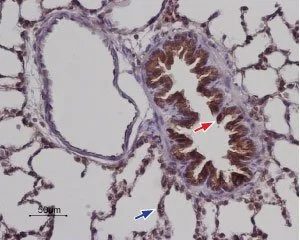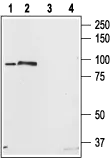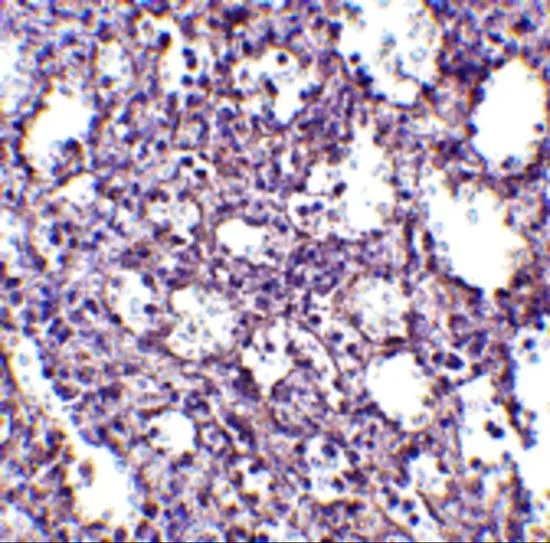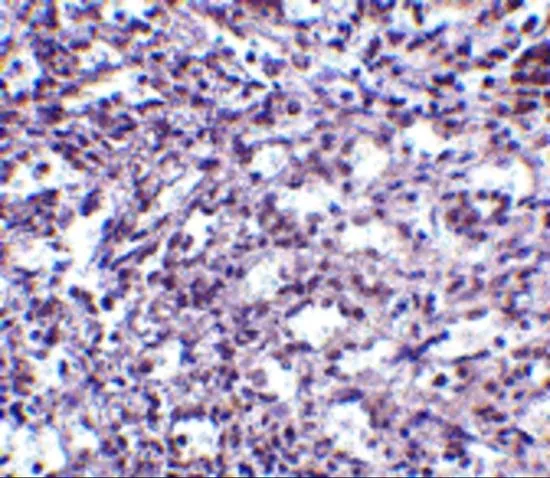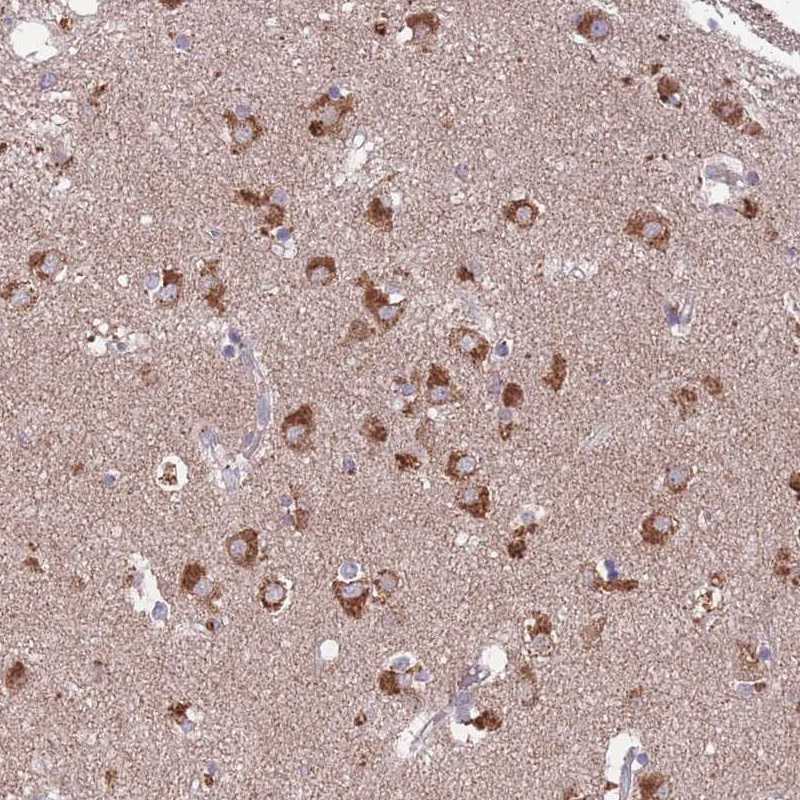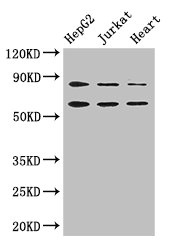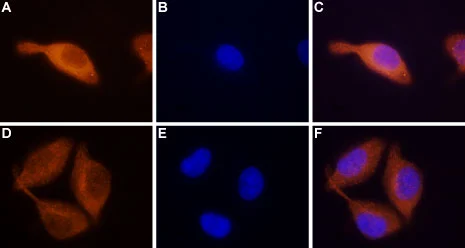
ICC/IF analysis of PFA-fixed RBL cells using GTX54768 STIM2 antibody. Panel A,D : Primary antibody Panel B,E : DNA dye Hoechst 33342 Panel C,F : Merged images of panels A and B Dilution : 1:100
STIM2 antibody
GTX54768
ApplicationsImmunoFluorescence, Western Blot, ImmunoCytoChemistry, ImmunoHistoChemistry, ImmunoHistoChemistry Paraffin
Product group Antibodies
TargetSTIM2
Overview
- SupplierGeneTex
- Product NameSTIM2 antibody
- Delivery Days Customer7
- ApplicationsImmunoFluorescence, Western Blot, ImmunoCytoChemistry, ImmunoHistoChemistry, ImmunoHistoChemistry Paraffin
- CertificationResearch Use Only
- ClonalityPolyclonal
- Concentration0.8 mg/ml
- ConjugateUnconjugated
- Gene ID57620
- Target nameSTIM2
- Target descriptionstromal interaction molecule 2
- Target synonymsstromal interaction molecule 2
- HostRabbit
- IsotypeIgG
- Protein IDQ9P246
- Protein NameStromal interaction molecule 2
- Scientific DescriptionThis gene is a member of the stromal interaction molecule (STIM) family and likely arose, along with related family member STIM1, from a common ancestral gene. The encoded protein functions to regulate calcium concentrations in the cytosol and endoplasmic reticulum, and is involved in the activation of plasma membrane Orai Ca(2+) entry channels. This gene initiates translation from a non-AUG (UUG) start site. A signal peptide is cleaved from the resulting protein. Multiple transcript variants result from alternative splicing. [provided by RefSeq, Dec 2009]
- Storage Instruction-20°C or -80°C,2°C to 8°C
- UNSPSC12352203

